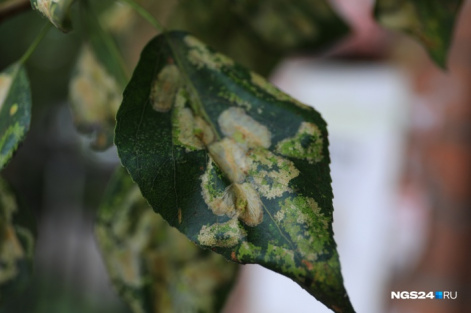The leaves of poplars in Krasnoyarsk began to dry up and become covered with spots. Is the smoke to blame?
26 July 2019 г.

Natalya Kirichenko, Candidate of Biological Sciences, senior research associate at the Sukachev Institute of Forest SB RAS told journalists of the Internet portal ngs.24 what really happened to the poplars. “Browning of poplars and the presence of spotted lesions on the leaves is the result of the vital activity of the poplar leaf miner (Lithocolletis populifoliella), which is a microscopic butterfly belonging to the order Lepidoptera. This insect is known for its regular outbreaks in Krasnoyarsk and other areas of Siberia. It damages the balsam poplar introduced fr om the North America and its hybrids.
In cities, plants are experiencing a large amount of man-made impact. As a result, their resistance to pests may decrease,” - the specialist says. According to Natalya Kirichenko, the caterpillars of this moth species “have a hidden lifestyle” - they mine leaves - gnaw out cavities in the thickness of the leaf blade, leaving the leaf skin intact. Thus, throughout the development (up to pupation), the caterpillars stay inside the leaves in mines, being protected from the impact of environmental factors. In case of mass damage (one leaf can have up to 20 mines of poplar moths), the poplar leaves dry up and fall a month and a half earlier than usual. This affects the physiological state of the poplars, reduces their decorative and sanitary value in the city. Krasnoyarsk is not the only area wh ere moth outbreaks can be observed. Biological control can be a promising method of constraining the “explosive character” of the poplar miners in the city — controlling the number of pest populations by a complex of natural enemies - parasitic insects. In favorable years they can significantly reduce the number of poplar miners.
The scientists of the laboratory wh ere Natalia works are searching for the most effective method to control pests in the city.
Source: ngs.24
Share:
